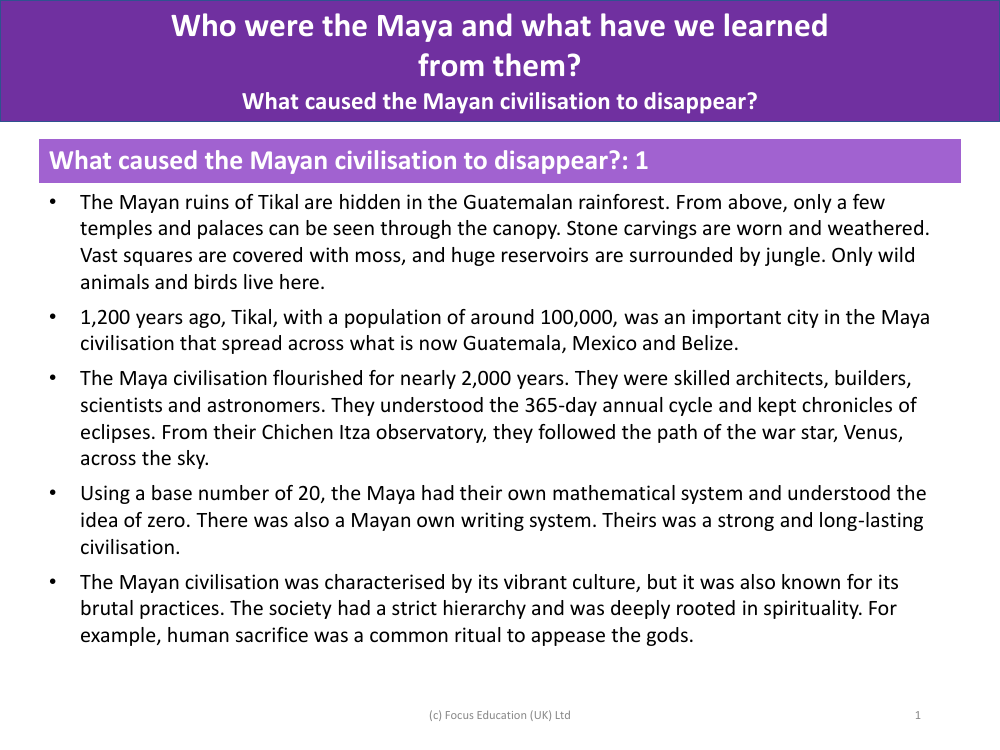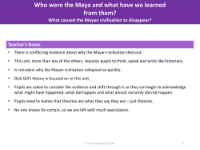What causes the Maya civilisation to disappear? - Info pack

History Resource Description
The mysterious disappearance of the Mayan civilisation, once a beacon of architectural, scientific, and astronomical prowess, has puzzled historians and archaeologists for centuries. Flourishing for nearly 2,000 years, the Maya were known for their sophisticated understanding of the 365-day calendar, their complex mathematical system, and a distinct writing system. Their civilisation, which spanned across present-day Guatemala, Mexico, and Belize, was also marked by a rigid social hierarchy and spiritual practices that included human sacrifice. The ruins of Tikal, a once bustling Mayan city with an estimated population of 100,000, now lie hidden in the Guatemalan rainforest, with temples and palaces peeking through the canopy, hinting at the grandeur that was.
By the ninth century, many prominent Mayan cities, including Tikal, were deserted, and the civilisation never fully recovered, leading to widespread speculation about the cause of its collapse. Theories have ranged from warfare, invasion, and disease to environmental factors like over-farming. One particular theory, proposed by a banker-turned-researcher named Dick Gill, attributed the decline to a severe drought. Gill's hypothesis was initially controversial, as it diverged from more conventional explanations. However, his quest for evidence led him to archival records and ancient colonial documents that suggested the occurrence of significant droughts in the region. His theory gained further support when a research team studying past climates found signs of extreme drought in the ninth century through mud core analysis from Lake Chichancanab, indicating a period of significant dryness that coincided with the Maya civilisation's downfall.





